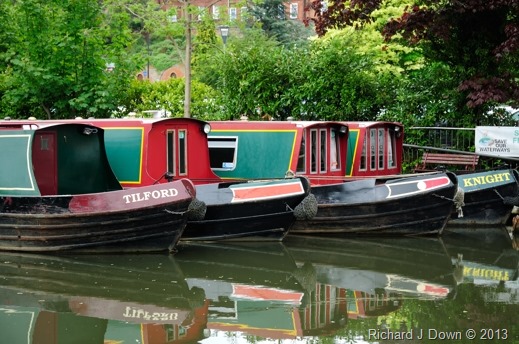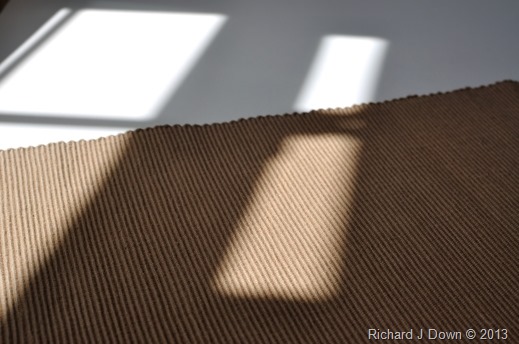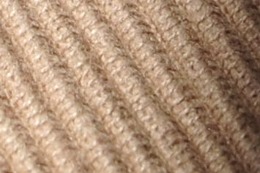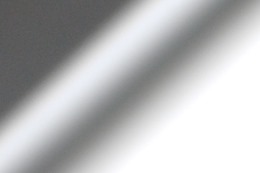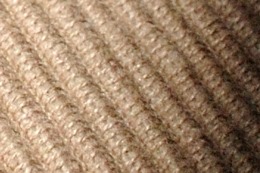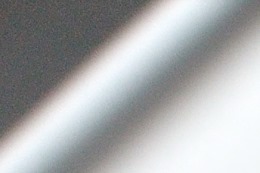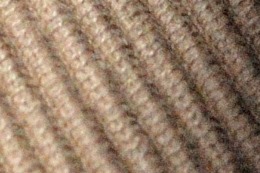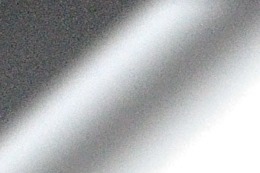Exercise 4: Your camera’s dynamic range
The brief for this exercise was to measure the the exposure values of levels of brightness and shadows within a scene containing bright sunlight and deep shadows. This would enable me to determine the dynamic range of of my camera.
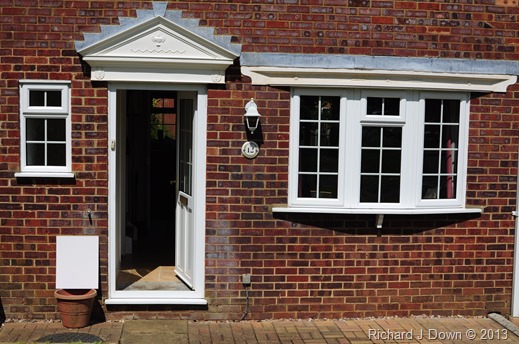
With the ISO setting at 100, I photographed the scene with the exposure set so that there was no highlight clipping of the white card. The exposure was 1/800s f6.3 with the metering set for the average of the whole scene.
The various meter readings, taken with the spot meter on my camera are as indicated on the sketch below:
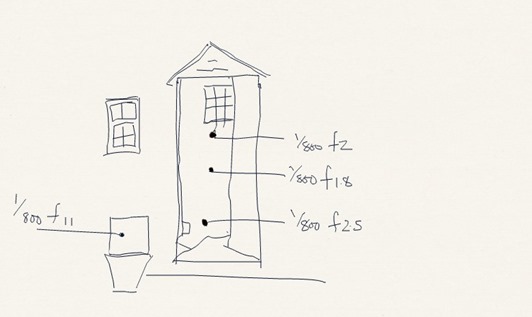

From the watch point sampler it can be seen that the average value for the white card at this exposure (1/800 @ f11) is 224…..

….and the average for the deepest shadow area of the image is 2 (1/800 @ f1.8).
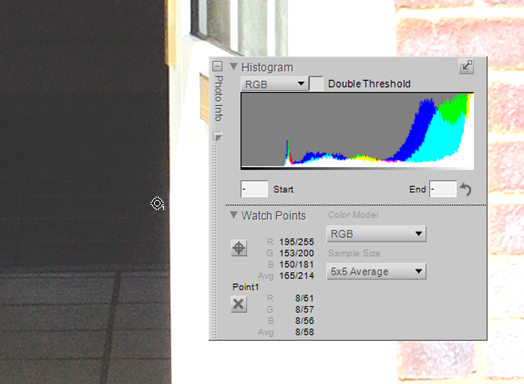
By adjusting the exposure value 2 stops and moving the the brightness slider, you can see the noise starting to appear on the margin between the floor and the edge of the door. This represents the darkest shadow of the image that could be recorded. The dynamic range for my camera can therefore be determined over the range f1.8, f2, f2.8, f4, f5.6, f8 and f11 = 7 stops (35mm f1.8 fixed focal length lens).
Conclusion: I was somewhat surprised by the restricted dynamic range of my camera/lens combination. The image does look a bit “muddy” and maybe could have received a little more exposure. If the weather conditions allow, I may repeat the exercise using a grey card to determine the overall exposure. It may be that the average matrix for exposure is not that accurate.
Exercise 5: Scene dynamic range
Objective: To take five differently lit scenes and within each, find and measure the darkest and brightest areas. Using the spot meter on my camera I metered the brightest and darkest areas of the scenes and recorded them below:
Scene 1: 2979 1/60s f4.5 ISO100 60mm
The scene is fairly flat, lit by an overcast sky with no sunlight. I deliberately excluded the sky.
Scene 2: 2980 1/100s f4.5 ISO100 35mm
I chose this scene to illustrate the effect of a bright but grey sky on the exposure of the whole image.
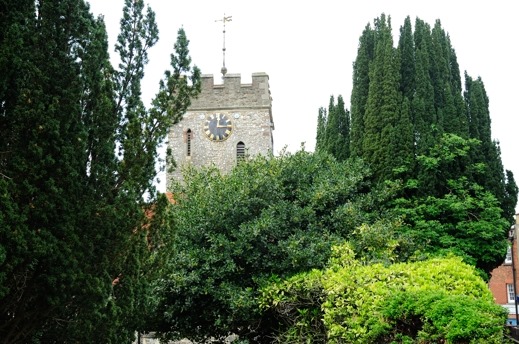
The meter reading for the sky was f22 (at 1/100s) and for the darkest area of shadow (bottom) left, f7.1., a range of three and one third stops.The matrix metering function gave an exposure of f4.5 at 1/100s which resulted in the sky burning out completely but there are still details in the shadows at bottom left.
Scene 3: 2985 1/10s f8 ISO400 70mm (matrix metering)
This scene is lit from a north facing window, the sky outside is overcast.
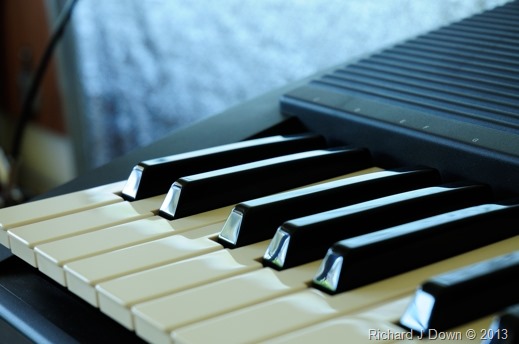
The lightest part is f11 and the darkest, f6.3 showing a range of one and two thirds stops.
Scene 4: 2989 1/125s f9 ISO100 70mm (matrix metering)
This scene is lit by bright sunlight diffused by thin high cloud. The sun is high in the sky.
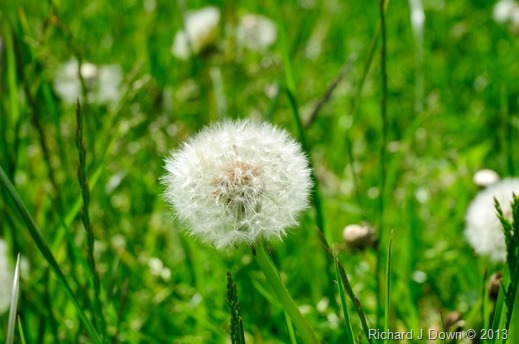
Using the spot meter function of my camera I determined that the seed head gave a reading of f13 and the background green hues gave a reading of f6.3. A range of 2 stops. A fairly neutral scene in terms of contrast.
Scene 5: 2992 1/80s f7.1 ISO100 18mm (matrix metering)
This is the high dynamic range which includes the sun in the frame.
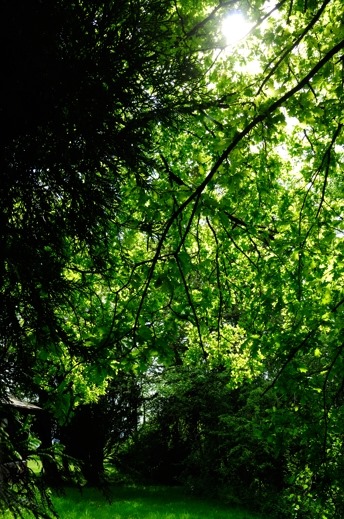
The range for this image is f3.5 for the shadows and f22 for the highlights, equal to five and one third stops.
Conclusions: I found this exercise valuable in terms of a demonstration of the limitations of exposure and the rendering of the entire range of exposure values within a scene. This has reinforced the valuable lessons I learned from working with film and bracketing exposures half a stop above and below that indicated by the light meter. From experience I know that my Nikon D90 gives a better exposure if I under expose by 0.7 (matrix metering). I have experimented with using a grey card to measure exposure and have got some results but I have yet to find an accurate comparison with the more sophisticated electronic metering system in my digital SLR.
The maxim that I used to apply to film was “expose for the shadows, develop for the highlights” The reverse holds true for digital processing. If you are using RAW format, correctly exposing for the highlights and then processing the RAW image to bring up details in the shadows can work well. Producing correctly exposed images in jpeg format for the next assignment will be a challenge. I will use bracketing and do some more experiments with the grey card.
